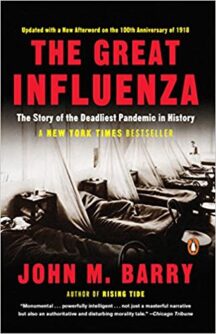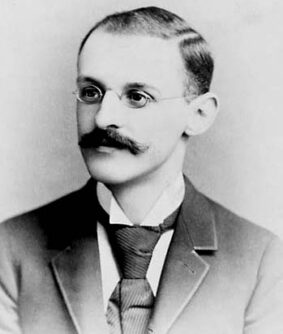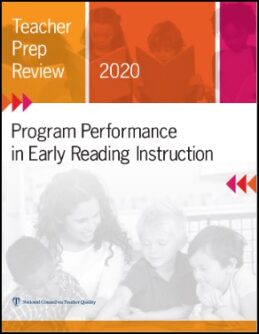
John M. Barry’s 2004 book The Great Influenza: The Story of the Deadliest Pandemic in History is being widely re-read—and maybe in some ways, for that matter, largely rewritten, too. The Great Influenza is about the deadly 1918 flu plague, including the medical science behind the virus and the various political conditions in existence when it thrived. We at The Giving Review previously have noted Barry’s coverage of the Creel Committee in the book.
Philanthropy also plays a role, also worthy of note and comment, in it. It’s a role, moreover, worth comparing to a contemporary context.
In 1904, as recounted in The Great Influenza, the American Medical Association (AMA) formed a Council on Medical Education to help organize a movement to reform the country’s system of medical education, in which many saw too large a quality between elite and other schools. In 1907, the council issued a blistering, but confidential, report that antagonized many of its own member doctors.
“Unable to confront its own membership,” according to Barry, “the AMA gave its report to the Carnegie Foundation, insisted that it remain confidential, and asked for help. In turn, the Carnegie Foundation commissioned” Abraham Flexner to survey medical education.
Abraham Flexner was the brother of Simon Flexner, a friend and advisor to John D. Rockefeller, Jr. Simon Flexner was a trustee of the Rockefeller Foundation and the first director of the Rockefeller Institute for Medical Research, which later became Rockefeller University.
[caption id="attachment_71999" align="alignnone" width="283"] Abraham Flexner (Wikimedia Commons)[/caption]
Abraham Flexner (Wikimedia Commons)[/caption]
Abraham Flexner was not a doctor. He had been an undergraduate student at Johns Hopkins University, itself founded to change all of American education. He had, Barry writes, “already demonstrated both a ruthless, unforgiving judgment and a commitment to advancing model educational institutions.” He created, and personally recruited Albert Einstein to, the Institute for Advanced Study at Princeton.
His harsh, book-length report, Medical Education in the United States and Canada—known as The Flexner Report—appeared in 1910. Its introduction was written by his mentor and Carnegie Foundation for the Advancement of Teaching president Henry S. Pritchett, a former president of the Massachusetts Institute of Technology.
According to the famous Flexner Report, Barry continues,
few—very, very few—schools met his standards, or any reasonable standard. He dismissed many schools as “without redeeming features of any kind … general squalor … clinical poverty. … [O]ne encounter surgery taught without patient, instrument, model, or drawing; recitations in obstetrics without a manikin in sight—often without one in the building.”
The report concluded that more than 120 of the over 150 medical schools operating in the U.S. and Canada should be closed. It “transformed the medical education landscape and set a philosophical course for medical school curricula, clinical training and physician licensure that has been the foundation of American medicine over the past century,” according to a March paper by the American Enterprise Institute’s James C. Capretta.
“It was the Progressive Era. Life was becoming organized, rationalized, specialized. In every field ‘professionals’ were emerging,” Barry’s The Great Influenza correctly notes. “But the Flexner report did not merely reflect the Progressive Era.” In fact, it “reflected less the Progressive Era than science. Not surprisingly, progressives failed in a similar effort to standardize training of lawyers. Anyone could read a statute; only a trained specialist could isolate a pathogen from someone sick.”
Many believe that The Flexner Report reflected what had been a developing consensus about the state of medical education anyway. “This consensus placed scientific competence at its center and in service of a remarkably progressive vision,” as put in 2015 by Benjamin Riley of Deans for Impact, a group of deans of colleges of education.
The Progressive Era, Barry goes on in The Great Influenza, “was also the muckraking era. Flexner’s report raked muck and created a sensation,” having been widely publicized. “The impact was immediate. Armed now with the outcry Flexner had generated,” the AMA began rating med schools.
While Riley points out that med schools had been closing before the Flexner Report in any case, “[l]ess than four years after Flexner’s report was issued,” according to Barry, “thirty-one states denied licensing recognition to new graduates of Class C institutions, effectively killing the schools outright. … By the late 1920s, before the economic pressure of the Depression, nearly one hundred medical schools had closed or merged.” Longer-term, Capretta writes, “From 1906 to 1944, the number of medical schools in the US producing newly educated physicians fell from 162 to 69.”
The model for the schools that survived, Barry notes, was Johns Hopkins.
“Flexner’s report had indirect impact as well,” he writes.
It greatly accelerated the flow, already begun, of philanthropic funds into medical schools. Between 1902 and 1934, nine major foundations poured $154 million into medicine, nearly half the total funds given away to all causes. And this understates the money generated, because the gifts often required the schools to raise matching funds. This money saved some schools. …
The largest single donor remained the Rockefeller Foundation.
In 1912, according to Riley, Flexner himself “joined the Rockefeller-funded General Education Board [GEB] and spent the next 25 years helping raise more than $500 million—around $6 billion in today’s dollars—to support the scientific, research-oriented medical schools endorsed in his report.”
With Rockefeller Foundation support, as Barry dramatically tells it, the Johns Hopkins School of Hygiene and Public Health was scheduled to open on October 1, 1918—in the midst of that which became the deadliest pandemic in human history.
Flexner was often considered overbearing by existing and would-be grantees. In the face of opposition from existing faculty members, he demanded that GEB med-school grantees’ appoint full-time clinical professors who would be “true university teachers, barred from all but charity practice, in the interest of teaching.”
“By 1920,” according Martin Morse Wooster’s Great Philanthropic Mistakes, the strong-minded “Flexner’s insistence on ‘full time in medicine’ as a condition of all Rockefeller grants to medical schools had earned him many foes, including two Ivy League presidents, his former mentor Pritchett, and some members of the Rockefeller Foundation board.
“[O]nce he had the money,” Wooster writes, Flexner “strode over the world of medical schools like a colossus. He went to work trying to find schools that would accept the thick strings of GEB aid and put the full-time scheme to work.”
There have been several contemporary projects seeking to foment reform of higher-education schools and departments that have generally likened their work to that of The Flexner Report, touting similar potential impact. One in particular comes to mind: the National Council on Teacher Quality’s (NCTQ’s) great Teacher Prep Review project—which used to be supported by Milwaukee’s Lynde and Harry Bradley Foundation, where I worked. It’s now supported by the Carnegie Corporation of New York, Laura and John Arnold, the Searle Freedom Trust, and the Albertson Family, Achelis & Bodman, and Anschutz Foundations, among others.
Flexner and his report were funded by a budding, professionalizing philanthropic establishment taking shape and flexing its muscles in Progressive Era America. He was a non-doctor, though, taking on much of the medical and med-school establishment of its time—including at its highest, Ivy League levels. Maybe not a populist himself Flexner, but that is the kind of thing populists would probably like, and givers should look to fund.
NCTQ’s Teacher Prep Review has basically been similarly anti-establishment, and it’s consistent with Barry’s description of the Flexner exercise as muckraking. Since 2006, the effort has thoroughly and systematically reviewed curricula, made recommendations, and highlighted effective practices in undergraduate and graduate programs to educate U.S. elementary, secondary, and special-education teachers.
“Through an exhaustive and unprecedented examination of how these schools operate,” three NCTQ researchers write in a 2013 report, “the Review finds they have become an industry of mediocrity, churning out first-year teachers with classroom management skills and content knowledge inadequate to thrive in classrooms with ever-increasing ethnic and socioeconomic student diversity.”
The Teacher Prep Review’s most-recent report is January’s Program Performance in Early Reading Instruction.

The ed-school establishment has not necessarily appreciated all of NCTQ’s muckraker-like attention any more than the med schools appreciated Flexner’s last century. Early on, in fact, NCTQ had to threaten or actually file open-records lawsuits to gain access to ed-school classes’ syllabi. Ed schools may be a more-entrenched establishment than med schools were at the beginning of last century.
Post-Flexner Report, med schools became more scientifically “expert,” with some benefit, some echoes which we’re seeing in today’s coronavirus pandemic. During and because of the Progressive Era, well-credentialed, scientifically based expertise spread. Established, progressive philanthropy helped it along all the way, into almost every other area of American life, including much beyond the hard sciences—with questionable benefit, and often to detriment. Expertise-dependent scientism hasn’t done so well in the soft social sciences, and for social policy, in the decades since The Flexner Report’s release.
To a large extent, in fact, during the past century, philanthropy has essentially elevated those whom we would now consider experts, and what we’d now consider expertise, from the “Third Estate” of commoners into the “Second Estate” of noblemen and -women. Philanthropy essentially bought itself a higher status there, too, by the way. Any benefits from the 1910 Flexner Report notwithstanding, this has had quite-negative consequences.
We at TGR regularly inveigh against overbearing philanthropic arrogance, including when in the form of conditions on grants, and we’ll continue to do so. We should return, however, to a philanthropy that aggressively challenges the comfortably entrenched—as The Flexner Report did in 1910. NCTQ’s Teacher Prep Review is trying to do so.